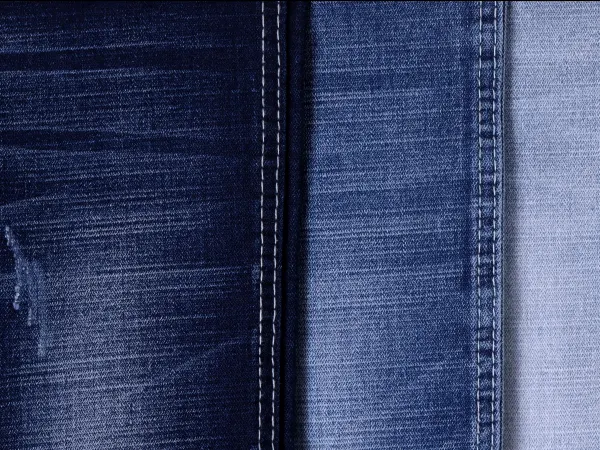Denim is a classic fabric that has been a staple in fashion for decades. However, not all denim is created equal. Two commonly used denim variations are TC denim and TR denim. Understanding the differences between these two fabrics is essential for making informed choices as consumers. In this article, we will explore the background information, fabric composition, comfort and durability, price and availability, performance and suitability, and provide practical examples of TC and TR denim, enabling you to make well-informed decisions when it comes to choosing the right fabric for your needs.
Background Information
- About TC Denim
TC denim, also known as T/C denim, refers to a fabric blend that combines cotton (denoted by ‘C’) and polyester (denoted by ‘T’). It is a popular choice in the textile industry due to its versatility and durability.
- About TR Denim
TR denim, or T/R denim, is a blend of cotton and rayon (denoted by ‘R’). Rayon, a semisynthetic fiber made from wood pulp, adds unique qualities to the fabric and increases its appeal in certain applications.
Different denim fabrics have distinct characteristics and properties that can significantly impact their performance, comfort, and aesthetics. By understanding these differences, consumers can make more informed choices, ensuring they find the fabric that best suits their individual needs and preferences.
Fabric Composition
TC Denim
- Definition and Characteristics
TC denim is primarily composed of cotton, a natural fiber known for its breathability, softness, and durability. The addition of polyester enhances the fabric’s strength, wrinkle resistance, and color retention, making it highly suitable for various applications.
- Composition and Blend Percentages
Composition and Blend Percentages: TC denim typically consists of a higher percentage of cotton (around 70%-80%) combined with polyester (about 15-25%). The precise blend percentages may vary depending on the specific needs of the fabric manufacturer or based on fabric performance.
- Strengths and Weaknesses
TC denim’s composition imparts several advantages. It offers good tear strength, abrasion resistance, and dimensional stability. However, it may lack the natural feel and drape of pure cotton denim.

TR Denim
- Definition and Characteristics
TR denim incorporates cotton and rayon, a semi-synthetic fiber known for its silky texture and high moisture absorption properties. This blend results in a fabric that combines the best of both worlds.
- Composition and Blend Percentages
Before TR denim typically consists of a higher percentage of cotton (around 60-70%) combined with rayon (30-40%). But now most TR denim consists of a higher percentage of cotton (around 70%-80%) combined with polyester (about 10%-20%) and a lower percentage of rayon (about 5%-10% or less). The specific blend percentages can vary to achieve the desired fabric characteristics.
- Strengths and Weaknesses
TR denim offers excellent drape, breathability, and moisture absorption due to the inclusion of rayon. However, it may have slightly lower tensile strength and durability when compared to TC denim.
Key Differences in Fabric Composition
The primary difference in fabric composition between TC and TR denim lies in the additional component. TC denim blends cotton with polyester, while TR denim blends cotton with rayon. These variations in fabric composition result in distinct qualities, performance, and comfort levels.
Comfort and Durability
- TC Denim
Comfort Levels: TC denim provides a comfortable wearing experience due to the presence of cotton. Cotton fibers are known for being breathable, soft, and absorbent, allowing for better air circulation and moisture-wicking properties, which help to keep the wearer cool and dry.
Durability and Resistance: The polyester component in TC denim enhances its durability, making it more resistant to wear and tear, stretching, and shrinking. Additionally, polyester lends strength to the fabric, ensuring it retains its shape over an extended period.
- TR Denim
Comfort Levels: TR denim is renowned for its exceptional drape and fluidity, offering a luxurious feel on the skin. Rayon’s moisture absorption properties make it suitable for warmer climates, as it promotes breathability and helps control sweat.
Durability and Resistance: While TR denim provides comfort, it may be less durable compared to TC denim due to the nature of rayon, which is generally less robust than polyester. However, it still offers adequate strength and resistance to maintain its structural integrity.
Contrasting Qualities in Comfort and Durability: TC denim excels in overall durability, making it suitable for heavy-duty applications, while TR denim focuses on comfort and drape. Choosing between the two depends on the desired balance between longevity and wearing experience.
Price and Availability
- TC Denim
Price Range: TC denim is relatively affordable due to the cost-effectiveness of polyester. The price can vary based on brand, quality, and specific blend compositions.
Availability in the Market: TC denim is widely available in the market, as it is a popular choice among fabric manufacturers and apparel brands. It can be found in various retail outlets and online platforms.
- TR Denim
Price Range: TR denim pricing tends to be slightly higher than TC denim due to the inclusion of rayon, which can be costlier than polyester. However, the pricing depends on factors such as brand, quality, and fabric blend percentages.
Availability in the Market: While TR denim may not be as prevalent as TC denim, it is still widely accessible. It can be found in specialty fabric stores, boutique brands, and online marketplaces catering to specific fashion niches.
Comparing Price Points and Market Accessibility: When comparing the price and availability of TC and TR denim, TC denim typically offers a more affordable option and greater market availability. However, regional differences and specific demands may influence the availability and pricing in certain areas.
Performance and Suitability
- TC Denim
Applications and Uses: TC denim’s durability makes it suitable for a wide range of applications, including jeans, jackets, workwear, and upholstery. Its strength and resistance to fading and stretching make it ideal for garments that require frequent use and washing.
Performance in Different Situations: TC denim performs exceptionally well in rugged conditions, maintaining its structural integrity and retaining colors even after repeated washes or exposure to harsh environments. This makes it ideal for industries such as construction, agriculture, and outdoor activities.

- TR Denim
Applications and Uses: TR denim’s superior drape and luxurious feel make it a popular choice for fashion-forward garments such as dresses, skirts, blouses, and lightweight, flowing pants. Its moisture-wicking properties also make it suitable for summer wear and athleisure.
Performance in Different Situations: TR denim offers excellent comfort and breathability, making it ideal for occasions where a more relaxed and comfortable fit is desired. It drapes well on the body, enabling the fabric to flow and move naturally, enhancing the overall aesthetic appeal.
Determining the Ideal Fabric for Specific Needs: The choice between TC and TR denim depends on the specific requirements of the garment and the purpose it serves. Consider factors such as durability, comfort, and performance expectations when selecting the appropriate fabric for different applications.
Conclusion
In conclusion, understanding the differences between TC denim and TR denim allows consumers to make informed choices based on their specific needs. TC denim blends cotton and polyester, providing durability and strength, whereas TR denim blends cotton and rayon, offering comfort and drape. Each fabric has its unique characteristics, making it suitable for different applications. Consider factors such as comfort, durability, price, and performance expectations when making fabric choices.
By knowing these distinctions, consumers can make well-informed decisions, ensuring they choose the fabric that best suits their desired outcomes and preferences.





